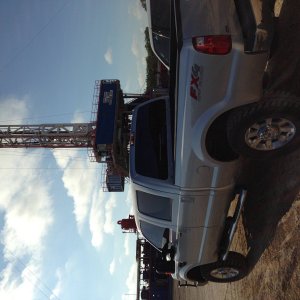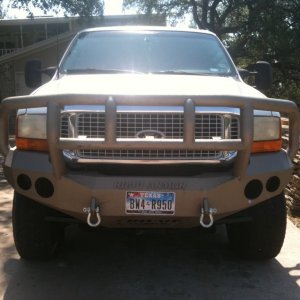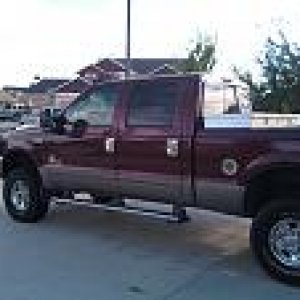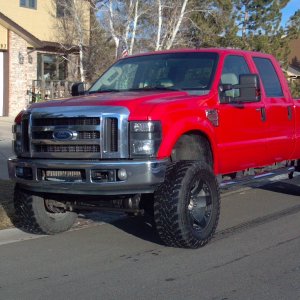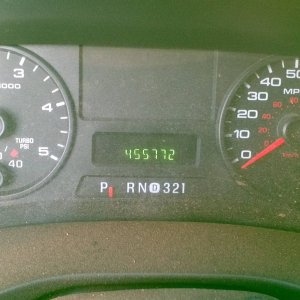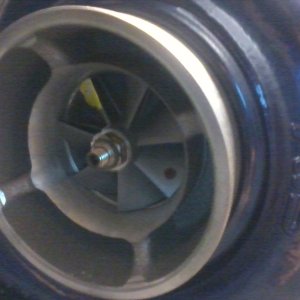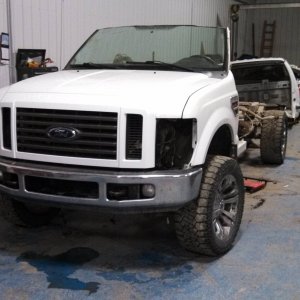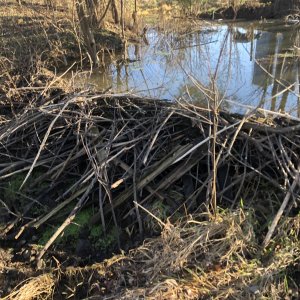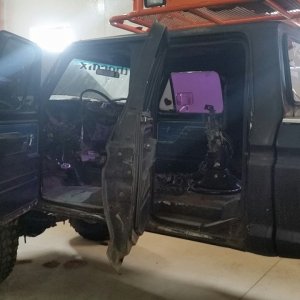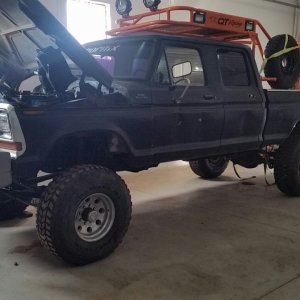Maybe it would be best to simply list the most common ways that people butcher this subject...
1. By producing a link whose combination of length and angle make it fight the arc-path that the axle naturally takes when cycling. The VAST majority of people error here by making links way too long, which makes it impossible to give the link the necessary angle, leaving the link to follow an arc with a much longer radus than that of the leafspring hanger the axle is pivoting on.
2. By thinking ______ length works on every truck with _____ wheelbase. Wrong. The determining factor is one thing..... height. Because unless you people are cutting the hangers off the frame and ordering special long or shorter than stock springs.... then the only thing effecting the arc the axle will take is the arch of the spring... which is directly related to the resting height, aka lift amount. Doesn't make one *** whether or not the truck is a reg cab, extended cab, crew cab, longbed, shortbed, doesn't make one bit of a ***. Only thing that matters is the angle formed between the bottom of the spring where it rests on the axle perch, and the hanger. That is what determines the radius of the arc the axle will travel in. The only modifier is in the elongation of the leaves as the spring is flattened out, with lift springs encountering far, far, FAR more rearward travel relative to the horizon as they compress vs a stock spring. So if your buddy had good luck with stock springs and a block with _____ length bars, and you've got 8" deavers on the rear of your truck, get ready to make a wooden cart if you build an identical set just because both of your trucks happen to be the same cab/bed configuration.
3. End hardware. People like to try and use standard spherical rod ends (heims) for a daily driven application on 7+ thousand pound vehicles that often tack on ANOTHER 15,000 or so lbs with a trailer and then don't understand why rod ends that race teams regularly throw away and replace on a sub 3000lb vehicle with service lives in the sub 1000 mile range didn't last on your daily driver. There are two viable options when it comes to a daily driven vehicle, poly joints and rebuildable spherical joints with replaceable poly cups like the jonny joint, Ballistic joints and the like. That's it. End of story. Everything else is for the confused.
4. Materials selection. This one is a combo... DUE TO the proliference of people that like to make mile long bars that fight their own suspension to the death on every bump and hump in the road, these same people have very long, unsupported bars that are binding the sh*t out of everything and encountering multiple times the stress they should. So they fold... These same people then usually grab the biggest, DOM piece they can and succeed in locking the suspension pretty much the rest of the way out and then tell everybody else how DOM is the only way because of how they destroyed other materials before. Well..... ah, yeah. If you always hit it with a 10lb hammer before putting it in your mouth you'd need a chromoly soup spoon too, lol. You can run regular old HREW tubing in an 1-5/8 to 2" varieties with great sucess if the geometry is acceptable and the subsequent length of the bar does not kill the slenderness ratio to the point of bar instability. If the damn thing bolts on somewhere near your front bumper, then no.... a HREW 1-5/8 pipe is not going to be sufficient. In that case maybe a chromo DOM 4" tube would be sufficient to lock out your suspension without failing. However, if the link is positioned like you have some sense, then more times than not, the link is relatively short in length, and does not warrant large or expensive materials.




